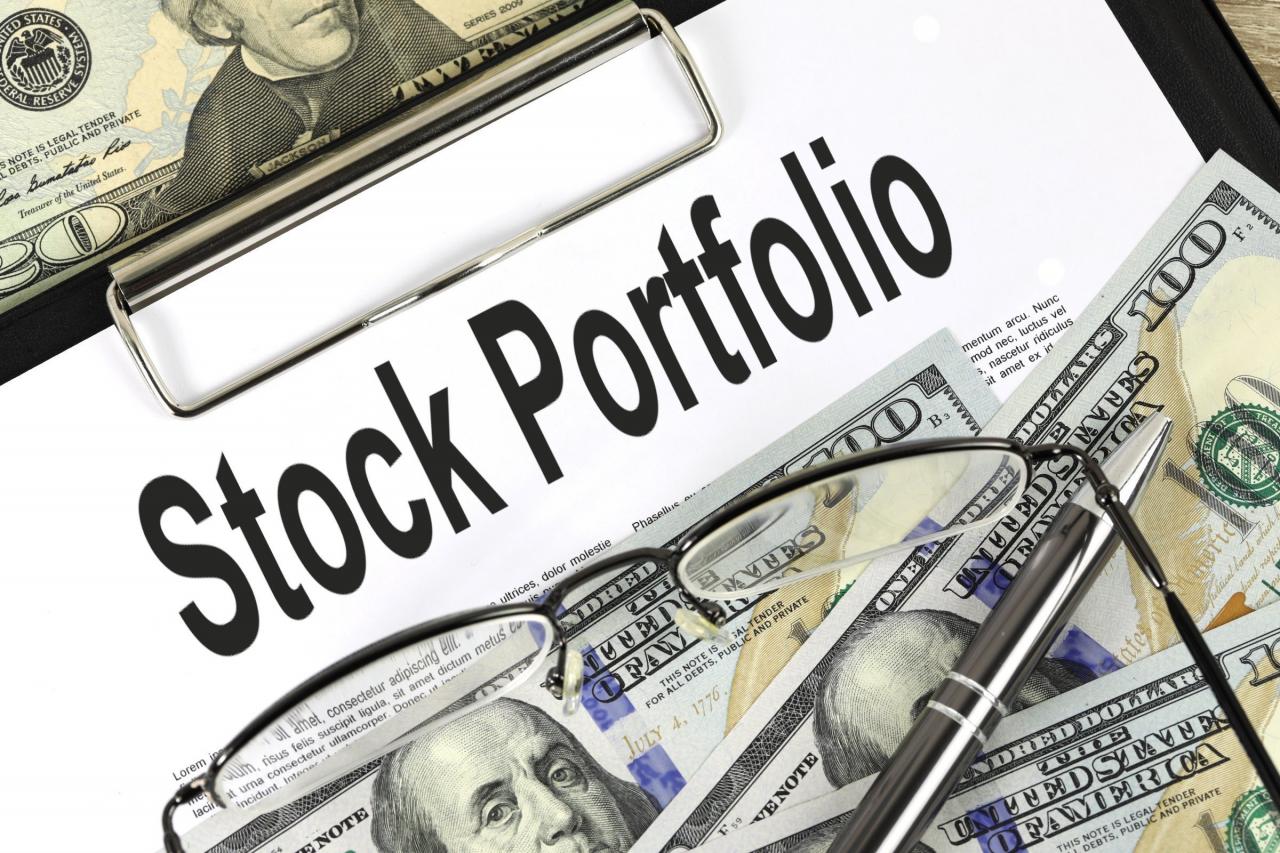Building Stock Portfolio to Provide Financial Security

The stock market is a powerful engine for wealth creation, a place where fortunes are made and dreams are realized. For many, however, the idea of building a stock portfolio can feel like a daunting and exclusive endeavor, reserved for seasoned investors with a deep understanding of complex financial jargon. The reality is that the tools and knowledge required to start investing are more accessible than ever before. A stock portfolio is not a gamble; it is a strategic and disciplined asset that can grow exponentially over time, providing a path to financial security and freedom. This extensive guide is designed to demystify the process, providing a comprehensive roadmap for beginners to navigate the world of stocks with confidence and clarity. We will explore the essential foundational steps, the diverse types of investments available, and the crucial mindset and habits required to build a resilient and profitable portfolio from the ground up.
Your Pre-Investment Checklist

Before you can even think about putting money into the market, it’s crucial to get your financial house in order. These preliminary steps are the bedrock of a successful investment strategy, ensuring that you are financially stable and prepared for the long haul.
A. Pay Off High-Interest Debt
High-interest debt, such as credit card balances or personal loans, can cripple your ability to save and invest. The interest you pay on this debt often far outweighs any potential returns you could earn from the stock market. Before you invest, prioritize paying off this debt. Think of it as a guaranteed, risk-free return on your money; paying off a credit card with a 20% interest rate is a far better investment than anything you will find in the market.
B. Create and Maintain an Emergency Fund
Life is unpredictable, and unexpected expenses can arise at any time, from a medical emergency to a car repair. An emergency fund is a liquid savings account with enough money to cover three to six months of essential living expenses. This fund acts as a financial safety net, preventing you from having to sell off your investments at a loss during a market downturn to cover an unforeseen cost.
C. Understand Your Risk Tolerance
Risk tolerance is your psychological comfort level with investment volatility. A young investor with a long time horizon before retirement can afford to take on more risk because they have time to recover from market downturns. Conversely, someone close to retirement should typically opt for more conservative, stable investments. Be honest with yourself about your risk tolerance; it will be a key factor in building a portfolio you can stick with.
Understanding Your Investment Choices
The world of stock investing offers a wide spectrum of options, each with its own level of risk and potential for return. For beginners, it’s important to understand the most common investment vehicles.
- A. Individual Stocks:When you buy a single stock, you are purchasing a small piece of ownership in a public company. This can be exciting and offers the highest potential for returns. However, it also carries the highest risk. If the company performs poorly, your investment could be wiped out. For beginners, buying individual stocks can be an emotional and high-risk endeavor.
- B. Mutual Funds:A mutual fund is a professionally managed collection of stocks, bonds, or other securities. When you buy a share of a mutual fund, you are essentially buying a small piece of a diversified portfolio. Mutual funds are a great way to gain instant diversification, spreading your risk across many different assets. They are a good option for those who want professional management.
- C. Exchange-Traded Funds (ETFs):An ETF is a fund that holds a basket of stocks and is designed to track a specific index, like the S&P 500. They are similar to mutual funds but trade on a stock exchange like a regular stock. ETFs are a fantastic choice for beginners because they are low-cost, provide instant diversification, and are easy to buy and sell.
- D. Dividend Stocks:A dividend is a portion of a company’s earnings that it pays out to its shareholders. By building a portfolio of dividend-paying stocks, you can generate a regular, passive income stream. Many established, stable companies pay dividends, which can provide a powerful source of recurring income that can be reinvested to accelerate growth.
- E. Index Funds:An index fund is a type of mutual fund or ETF that is designed to track a specific market index. A fund that tracks the S&P 500, for example, holds a small portion of the 500 largest U.S. companies. This is a simple, effective, and low-cost way to invest in the entire market without having to pick individual stocks.
The Golden Rules for Building a Resilient Portfolio
Building a successful and sustainable portfolio requires discipline and adherence to a few key principles that will protect you from market volatility and emotion-driven mistakes.
A. The Power of Compounding
The single most powerful force in investing is compounding. It’s the process of earning returns on your initial investment as well as on the accumulated returns from previous periods. This is what allows your money to grow exponentially over time. For an investor, starting early is the key to unlocking this power. Even a small amount of money invested consistently over a long period can grow into a substantial sum.
B. Start Small and Be Consistent
You don’t need a large sum of money to begin investing. The most important thing is to be consistent. Set up automatic investments so that a portion of your income is transferred to your investment account every month, regardless of market conditions. This is a strategy known as dollar-cost averaging, which helps to smooth out the effects of market volatility by buying more shares when prices are low and fewer shares when prices are high.
C. Diversify Your Portfolio
This is the golden rule of investing. Don’t put all your eggs in one basket. By spreading your investments across different asset classes (stocks, bonds, etc.) and different sectors, you protect yourself from a significant loss if one specific investment performs poorly. This is why mutual funds and ETFs are so powerful for beginners.
D. Invest for the Long Term
The stock market is a marathon, not a sprint. Short-term market fluctuations are inevitable. Trying to time the market is a fool’s errand. The most successful investors are those who remain disciplined, stay invested for the long term, and do not panic during market downturns. A long-term perspective allows you to weather the ups and downs and benefit from the market’s historical upward trend.
Practical Steps to Build Your First Portfolio

Once you have a solid financial foundation and a basic understanding of your investment choices, it’s time to take action.
- Open a Brokerage Account: You will need to open an investment account. There are many online brokerages that are user-friendly and offer low or zero fees, such as Fidelity, Vanguard, or Charles Schwab. Choose one that aligns with your needs and offers the investment vehicles you are interested in.
- Choose Your Investment Strategy: As a beginner, focus on a simple, low-cost strategy. An excellent starting point is to invest in a low-cost ETF that tracks a major index, such as the S&P 500. This provides instant diversification and exposure to the entire market.
- Set Up Automatic Investments: This is the most crucial step for building a consistent habit. Set up an automatic weekly or monthly transfer from your checking account to your investment account to ensure you are consistently investing without having to think about it.
- Stay Informed, Not Obsessed: It’s important to stay informed about the market, but you shouldn’t check your portfolio every day. Constant monitoring can lead to emotional decisions and impulsive trading. Set a schedule to review your investments, perhaps once a quarter, and stick to it.
The Future of Your Portfolio
As your portfolio grows, your strategy should evolve. The journey to a prosperous financial future is about more than just starting; it is about sustaining and optimizing your portfolio over time.
- Reinvest Your Earnings: The most powerful wealth hack is to take your investment earnings, such as dividends and capital gains, and reinvest them back into your portfolio. This is how you truly unlock the power of compounding and accelerate your wealth-building journey.
- Diversify Beyond Stocks: As your portfolio grows, start to diversify into other assets like bonds, real estate (through REITs or direct ownership), or even a small business. Diversification is key to protecting your wealth over the long term.
- Rebalance Your Portfolio: Over time, your asset allocation will change due to market performance. Periodically, you should rebalance your portfolio to ensure that your risk level always aligns with your financial goals. This could mean selling some stocks that have performed well and buying more bonds to maintain your desired allocation.
Conclusion
Building a stock portfolio is not an act of luck; it is a deliberate and disciplined process that is accessible to anyone. The journey begins not with a large sum of money, but with a simple decision to take control of your financial destiny. By first building a strong financial foundation—paying off high-interest debt and creating a robust emergency fund—you create the security and stability needed to take on more calculated risks. From there, the power lies in automation, consistency, and a long-term perspective. The key is to embrace the extraordinary force of compounding, a force that works tirelessly to multiply your wealth over time.
The avenues for building a prosperous future are more diverse and accessible than ever before. From the time-tested reliability of low-cost ETFs and index funds to the powerful potential of dividend stocks, there is a path for every individual. The magic of investing is that it allows your money to work for you, generating more money while you sleep, travel, or spend time with loved ones. This journey is not about making sacrifices; it’s about making smarter, more intentional choices. It’s a fundamental shift in mindset, from a consumer to an investor, from living for the immediate paycheck to building a life of long-term financial freedom. The road to financial independence is a long one, but with a clear plan, unwavering discipline, and the power of compounding on your side, you have everything you need to build a life of prosperity and security. The time to start is now, and your future self will thank you for it.








